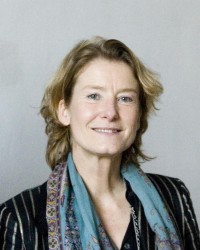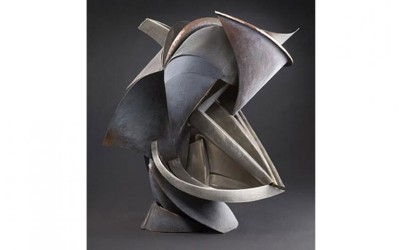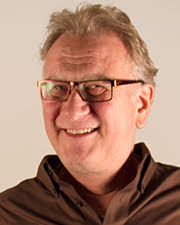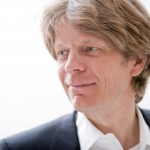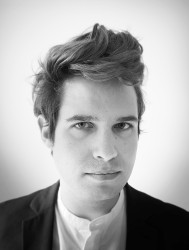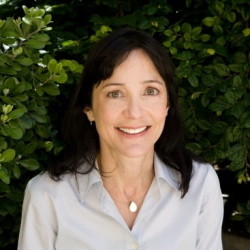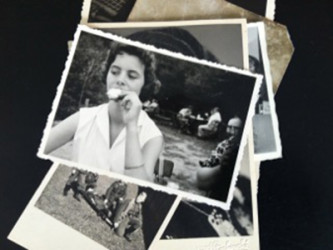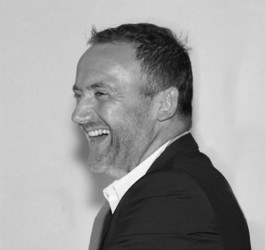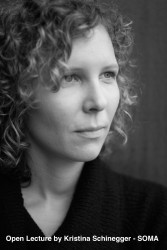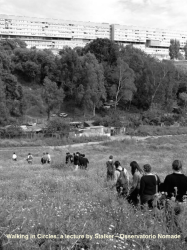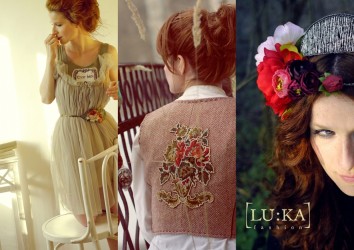Open Lectures
17.12.2015
Beatrice von Bismarck open lecture
On Thursday, December 17th 6PM we are pleased to host curator and professor of Academy of Visual Arts Leipzig Beatrice von Bismarck who will hold an open lecture „Valorisation Machines or The Exhibition as (Re-)Staging: “When Attitudes Become Form – Bern 1969/ Venice 2013”, Venice Biennial 2013“. The lecture will take place at the main hall of Estonian Academy of Sciences, Kohtu 6.
Exhibitions are in general performative. They bring their exhibits on stage by making them public. Furthermore they involve them in a process of meaning production through embedding them into new constellations. Over the course of processes of shifts and transpositions, additions and commentaries they create different relations between the exhibits and other objects on show as well as display devices, sites and spaces, people and discourses. Exhibitions are thus always temporally defined and this through the temporary structure of their exhibits as much as through their own rhythms, processes and duration.
With the exhibition “When Attitudes Become Form” (Bern, 1969) process and ephemerality have been inscribed not only into the history of art but also into the rather younger history of exhibitions. While a number of other curatorial initiatives around the late 1960s and early 1970s offered similarly oriented contributions to the discourse, the Swiss show and its curator Harald Szeemann acquired a particularly outstanding, almost legendary reputation. The re-staging of this show in 2013 in Venice at the Prada Foundation under the title of “When Attitudes Become Form -Bern 1969/ Venice 2013” implied a de-contextualisation and a resulting shift of meaning not only in aesthetic terms. Hand in hand with the alterations of the temporal and material conditions of the exhibits went a number of re-valorisations and capitalizations, which affected the artistic works, but also the participating artists, the curators and the exhibition itself. The Venice exhibition can thus be treated as a paradigm not only with regards to the theatrical nature of exhibiting but also to the meaning and value production of its performative capacities.
Beatrice von Bismarck (Leipzig/ Berlin), professor at the Academy of Visual Arts Leipzig for Art History, Visual Culture and Cultures of the Curatorial. 1989 – 1993 Städel Museum, Frankfurt/Main curator 20th Century art. 1993 – 1999 Lüneburg University, co-founder and -director of the project-space „Kunstraum der Universität Lüneburg“. 2000 co-founder of the project-space „/D/O/C/K-Projektbereich“. 2009 initiator of the MA-program “Cultures of the Curatorial“. Research areas: The curatorial; effects of neo-liberalism and globalization on the cultural field; postmodern concepts of the „artist“.
Currently on research leave for a book on “The Curatorial” financed by the “Opus magnum”-program of the VWStiftung.
Publications include: – Games Fights Collaborations. Art and Cultural Studies in the 90s, Ostfildern-Ruit 1996. (ed. with Diethelm Stoller, Ulf Wuggenig); – Interarchive. Archival Practices and Sites in the Contemporary Art Field, Cologne 2002. (ed. with Hans-Peter Feldmann, Hans Ulrich Obrist, Diethelm Stoller, Ulf Wuggenig); – Grenzbespielungen. Visuelle Politik in der Übergangszone (Performing the Border. Visual Politics in Zones of Transgression), (ed.), Cologne 2005; – Globalisierung/Hierarchisierung. Kulturelle Dominanzen in Kunst und Kunstgeschichte (Globalization/ Hierarchization. Cultural Dominances in Art and Art History), Marburg 2005 (ed. with Irene Below); – beyond education. Kunst, Ausbildung, Arbeit und Ökonomie, (beyond education. Art, Education, Work and Economy), Frankfurt a. M. 2005 (ed. with Alexander Koch); – Nach Bourdieu: Visualität, Kunst, Politik (After Bourdieu. Visuality, Art, Politics), Vienna 2008 (ed. with Therese Kaufmann, Ulf Wuggenig); – Auftritt als Künstler (Performance as Artist), Cologne 2010; – Cultures of the Curatorial (ed. With Jörn Schaffaf and Thomas Weski), Berlin 2012; – Timing – On the Temporal Dimension of Exhibiting (ed. with Rike Frank, Benjamin Meyer-Krahmer, Jörn Schafaff, and Thomas Weski), Berlin 2014; – Hospitality – Hosting Relations in Exhibitions, (ed. with Benjamin Meyer-Krahmer), Berlin (about to come out in January 2016).
The public lecture will be preceded by a reading group of prof von Bismarck’s earlier texts, to be taking place on Wednesday, December 9th at 4PM at the Centre for Contemporary Art Estonia, please register rebeka@cca.ee.
Beatrice von Bismarck will also be holding a seminar at the Institute of Art History on December 18th, 10 AM, room 104. For participation please email ingrid.ruudi@artun.ee
Beatrice von Bismarck open lecture
Thursday 17 December, 2015
On Thursday, December 17th 6PM we are pleased to host curator and professor of Academy of Visual Arts Leipzig Beatrice von Bismarck who will hold an open lecture „Valorisation Machines or The Exhibition as (Re-)Staging: “When Attitudes Become Form – Bern 1969/ Venice 2013”, Venice Biennial 2013“. The lecture will take place at the main hall of Estonian Academy of Sciences, Kohtu 6.
Exhibitions are in general performative. They bring their exhibits on stage by making them public. Furthermore they involve them in a process of meaning production through embedding them into new constellations. Over the course of processes of shifts and transpositions, additions and commentaries they create different relations between the exhibits and other objects on show as well as display devices, sites and spaces, people and discourses. Exhibitions are thus always temporally defined and this through the temporary structure of their exhibits as much as through their own rhythms, processes and duration.
With the exhibition “When Attitudes Become Form” (Bern, 1969) process and ephemerality have been inscribed not only into the history of art but also into the rather younger history of exhibitions. While a number of other curatorial initiatives around the late 1960s and early 1970s offered similarly oriented contributions to the discourse, the Swiss show and its curator Harald Szeemann acquired a particularly outstanding, almost legendary reputation. The re-staging of this show in 2013 in Venice at the Prada Foundation under the title of “When Attitudes Become Form -Bern 1969/ Venice 2013” implied a de-contextualisation and a resulting shift of meaning not only in aesthetic terms. Hand in hand with the alterations of the temporal and material conditions of the exhibits went a number of re-valorisations and capitalizations, which affected the artistic works, but also the participating artists, the curators and the exhibition itself. The Venice exhibition can thus be treated as a paradigm not only with regards to the theatrical nature of exhibiting but also to the meaning and value production of its performative capacities.
Beatrice von Bismarck (Leipzig/ Berlin), professor at the Academy of Visual Arts Leipzig for Art History, Visual Culture and Cultures of the Curatorial. 1989 – 1993 Städel Museum, Frankfurt/Main curator 20th Century art. 1993 – 1999 Lüneburg University, co-founder and -director of the project-space „Kunstraum der Universität Lüneburg“. 2000 co-founder of the project-space „/D/O/C/K-Projektbereich“. 2009 initiator of the MA-program “Cultures of the Curatorial“. Research areas: The curatorial; effects of neo-liberalism and globalization on the cultural field; postmodern concepts of the „artist“.
Currently on research leave for a book on “The Curatorial” financed by the “Opus magnum”-program of the VWStiftung.
Publications include: – Games Fights Collaborations. Art and Cultural Studies in the 90s, Ostfildern-Ruit 1996. (ed. with Diethelm Stoller, Ulf Wuggenig); – Interarchive. Archival Practices and Sites in the Contemporary Art Field, Cologne 2002. (ed. with Hans-Peter Feldmann, Hans Ulrich Obrist, Diethelm Stoller, Ulf Wuggenig); – Grenzbespielungen. Visuelle Politik in der Übergangszone (Performing the Border. Visual Politics in Zones of Transgression), (ed.), Cologne 2005; – Globalisierung/Hierarchisierung. Kulturelle Dominanzen in Kunst und Kunstgeschichte (Globalization/ Hierarchization. Cultural Dominances in Art and Art History), Marburg 2005 (ed. with Irene Below); – beyond education. Kunst, Ausbildung, Arbeit und Ökonomie, (beyond education. Art, Education, Work and Economy), Frankfurt a. M. 2005 (ed. with Alexander Koch); – Nach Bourdieu: Visualität, Kunst, Politik (After Bourdieu. Visuality, Art, Politics), Vienna 2008 (ed. with Therese Kaufmann, Ulf Wuggenig); – Auftritt als Künstler (Performance as Artist), Cologne 2010; – Cultures of the Curatorial (ed. With Jörn Schaffaf and Thomas Weski), Berlin 2012; – Timing – On the Temporal Dimension of Exhibiting (ed. with Rike Frank, Benjamin Meyer-Krahmer, Jörn Schafaff, and Thomas Weski), Berlin 2014; – Hospitality – Hosting Relations in Exhibitions, (ed. with Benjamin Meyer-Krahmer), Berlin (about to come out in January 2016).
The public lecture will be preceded by a reading group of prof von Bismarck’s earlier texts, to be taking place on Wednesday, December 9th at 4PM at the Centre for Contemporary Art Estonia, please register rebeka@cca.ee.
Beatrice von Bismarck will also be holding a seminar at the Institute of Art History on December 18th, 10 AM, room 104. For participation please email ingrid.ruudi@artun.ee
16.11.2015
Jewellery and Blacksmithing Open Lecture: Jon Robert Havener Nov 16th
Kansase University metal and jewellwery professor Jon Robert Havener will give an open lecture about his works on Monday, November 16, 2015 at 6 pm.
The lecture will be held in English at the Estonian Academy of Arts, room 221 (Estonia pst 7, II floor). All who are interested, are welcome!
Jon Havener studied silver and goldsmithing at the Cleveland Art Institute in Cleveland, graduating with a B.F.A. in 1973; he got an M.F.A. in metalsmithing in 1975 at the Cranbrook Art Academy Bloomfield Hills, Mich. He has taught metalsmithing and jewelry in the design department at the University of Kansas since 1977.
Jon’s work with holloware in the early 1980s has evolved into smithed and fabricated sculpture that has been exhibited nationally in galleries and competitive exhibitions.
His work is included in various public collections: The City of Lawrence, Kan.; The City of Manhattan, Kan.; Florida A & M University; The University of Nebraska, Omaha; The United States Comptroller of Currency, Kansas City, Mo.; and the Boatman’s Bank, Clayton, Mo. His work is also featured in several private collections, notably commissioned fountains, and works on the wall.
Jon has received several awards and grants for his work, including the Regional Award in Sculpture from the Mid-American Art Allliance and The National Endowment for the Arts in 1985, five research awards from the University of Kansas, and the 1998 Kansas Artists Fellowship in Sculpture.
Jon says his work has evolved from an interest in antiquity and ancient metalwork, and frequently utilizes armor forms. “I enjoy manipulating metal into complex structures that evoke a sense of drama and history,” he says. “My sculptures are often highly gestural, expressing a turbulent energy through growth-like movements.”
https://art.ku.edu/jon-havener
Jewellery and Blacksmithing Open Lecture: Jon Robert Havener Nov 16th
Monday 16 November, 2015
Kansase University metal and jewellwery professor Jon Robert Havener will give an open lecture about his works on Monday, November 16, 2015 at 6 pm.
The lecture will be held in English at the Estonian Academy of Arts, room 221 (Estonia pst 7, II floor). All who are interested, are welcome!
Jon Havener studied silver and goldsmithing at the Cleveland Art Institute in Cleveland, graduating with a B.F.A. in 1973; he got an M.F.A. in metalsmithing in 1975 at the Cranbrook Art Academy Bloomfield Hills, Mich. He has taught metalsmithing and jewelry in the design department at the University of Kansas since 1977.
Jon’s work with holloware in the early 1980s has evolved into smithed and fabricated sculpture that has been exhibited nationally in galleries and competitive exhibitions.
His work is included in various public collections: The City of Lawrence, Kan.; The City of Manhattan, Kan.; Florida A & M University; The University of Nebraska, Omaha; The United States Comptroller of Currency, Kansas City, Mo.; and the Boatman’s Bank, Clayton, Mo. His work is also featured in several private collections, notably commissioned fountains, and works on the wall.
Jon has received several awards and grants for his work, including the Regional Award in Sculpture from the Mid-American Art Allliance and The National Endowment for the Arts in 1985, five research awards from the University of Kansas, and the 1998 Kansas Artists Fellowship in Sculpture.
Jon says his work has evolved from an interest in antiquity and ancient metalwork, and frequently utilizes armor forms. “I enjoy manipulating metal into complex structures that evoke a sense of drama and history,” he says. “My sculptures are often highly gestural, expressing a turbulent energy through growth-like movements.”
https://art.ku.edu/jon-havener
03.12.2015
Open Lecture Series: Jan Knippers 3.12 at 6pm
Estonian Academy of Arts Faculty of Architecture
“Open Lecture Series”
Kanuti Gildi SAAL (Pikk 20, Tallinn)
03.12. Jan Knippers / Stuttgart
Jan Knippers is a german engineer, co-founder of engineering practice Knippers Helbig Advanced Engineering. He studied civil engineering and got a consecutive PhD at TU Berlin. Since 2000 he is chair and director of the Institute for Building Structures and Structural Design, where he is leading research in long-span structures and novel materials. In collaboration with the Institute for Computational design he is involved in the development of the ICD + ITKE research pavilions, which deal with biomorphic form and automated robotic construction. In 2001 he co-founded Knippers Helbig in Stuttgart and in 2009 in New York. He is member of numerous national and international engineering associations.
http://www.itke.uni-stuttgart.de/index.php?lang=en
http://www.knippershelbig.com/
The lecture series is supported by the Estonian Cultural Endowment.
www.avatudloengud.ee
Open Lecture Series: Jan Knippers 3.12 at 6pm
Thursday 03 December, 2015
Estonian Academy of Arts Faculty of Architecture
“Open Lecture Series”
Kanuti Gildi SAAL (Pikk 20, Tallinn)
03.12. Jan Knippers / Stuttgart
Jan Knippers is a german engineer, co-founder of engineering practice Knippers Helbig Advanced Engineering. He studied civil engineering and got a consecutive PhD at TU Berlin. Since 2000 he is chair and director of the Institute for Building Structures and Structural Design, where he is leading research in long-span structures and novel materials. In collaboration with the Institute for Computational design he is involved in the development of the ICD + ITKE research pavilions, which deal with biomorphic form and automated robotic construction. In 2001 he co-founded Knippers Helbig in Stuttgart and in 2009 in New York. He is member of numerous national and international engineering associations.
http://www.itke.uni-stuttgart.de/index.php?lang=en
http://www.knippershelbig.com/
The lecture series is supported by the Estonian Cultural Endowment.
www.avatudloengud.ee
19.11.2015
OPEN LECTURE SERIES: GILLES RETSIN 19.11. AT 18
Estonian Academy of Arts Faculty of Architecture
“Open Lecture Series”
Kanuti Gildi SAAL (Pikk 20, Tallinn)
19.11. Gilles Retsin / London
Gilles Retsin Architecture is a young award-winning London based architecture and design practice investigating new architectural models which engage with the potential of increased computational power and fabrication to generate buildings and objects with a previously unseen structure, detail and materiality. The studio is interested in the impact of computation and new fabrication methods on the core principles of architecture – the bones rather than the skin. The practice has developed numerous provocative proposals for international competitions, qualifying most recently as one of the finalists for the New National Gallery in Budapest. His work is part of the permanent collection of the Centre Pompidou in Paris, and has been exhibited internationally in museums such as the Museum of Art and Design in New York. Alongside his practice, Gilles directs a research cluster at UCL/ the Bartlett school of Architecture investigating robotic manufacturing and large-scale 3D printing methods. He is also a senior lecturer at the University of East-London.
www.retsin.org
gillesretsin.tumblr.com
The lecture series is supported by the Estonian Cultural Endowment.
www.artun.ee/avatudloengud
OPEN LECTURE SERIES: GILLES RETSIN 19.11. AT 18
Thursday 19 November, 2015
Estonian Academy of Arts Faculty of Architecture
“Open Lecture Series”
Kanuti Gildi SAAL (Pikk 20, Tallinn)
19.11. Gilles Retsin / London
Gilles Retsin Architecture is a young award-winning London based architecture and design practice investigating new architectural models which engage with the potential of increased computational power and fabrication to generate buildings and objects with a previously unseen structure, detail and materiality. The studio is interested in the impact of computation and new fabrication methods on the core principles of architecture – the bones rather than the skin. The practice has developed numerous provocative proposals for international competitions, qualifying most recently as one of the finalists for the New National Gallery in Budapest. His work is part of the permanent collection of the Centre Pompidou in Paris, and has been exhibited internationally in museums such as the Museum of Art and Design in New York. Alongside his practice, Gilles directs a research cluster at UCL/ the Bartlett school of Architecture investigating robotic manufacturing and large-scale 3D printing methods. He is also a senior lecturer at the University of East-London.
www.retsin.org
gillesretsin.tumblr.com
The lecture series is supported by the Estonian Cultural Endowment.
www.artun.ee/avatudloengud
05.11.2015
Open Lecture by LEAH EDWARDS: ARTS INNOVATION AND GREEN/ENVIRONMENTAL BUSINESS: HOW IS ART MADE, HOW IS IT FUNDED AND DELIVERED USING TECHNOLOGY
Leah Edwards
Stanford Graduate School of Business
Center for Entrepreneurial Studies
Nov 5, 2015
Estonia pst 7, rm 440A
Tallinn
Leah Edwards, the Director of the Center for Entrepreneurial Studies in the Stanford Graduate School of Business will give a talk at the Estonian Academy of Arts on November 5th at 3.30 – 5.00 pm. She will discuss the topics of Arts Innovation and Green/ Environmental Business: how is art made, how is it funded and delivered using technology. Also, how to get a business to make a difference and make changes that are good for the environment and the next generation.
The lecture is open to all interested and will take place in the Estonian Academy of Arts main building at Estonia pst 7, room 440A .
—
Leah Edwards directs the Center for Entrepreneurial Studies in the Stanford Graduate School of Business, where she manages entrepreneurial course creation, experiential learning in innovation, case writing, the creation on online learning tools, and more. She combines hands-on entrepreneurial experience with the latest studies of the innovation mindset, optimal team formation and design thinking.
Prior to returning to the GSB, Leah was a serial startup co-founder and consultant to other entrepreneurs and corporations. Most recently, Leah was co-founder of Overstat, an online analytics and conversion rate optimization platform, sold to Tealeaf Technology in December 2011 (now part of IBM). Some of her prior projects include helping to grow a software company called Building Solutions, which she then helped to sell to SolarCity. She also helped sell GreenHomeGuide to the Green Building Council and launched the first green blog network, GreenOptions, which was purchased by Virgance (now 1Bog.com).
Leah began her entrepreneurial career by launching products for companies such as Intuit, Sega of America, Oracle and Taligent (a joint venture of IBM and Apple Computing) then co-founded her first startup in the late 90’s, Post Communications, which was funded by Mohr Davidow and sold to Netcentives for $380 million.
Leah also holds a B.S. in Business Administration from the University of California, Berkeley and an MBA and Certificate of Public Management from the Stanford Graduate School of Business along with her MBA.
Leah Edwards is visiting Estonia by the invitation of the Embassy of the United States of America.
Open Lecture by LEAH EDWARDS: ARTS INNOVATION AND GREEN/ENVIRONMENTAL BUSINESS: HOW IS ART MADE, HOW IS IT FUNDED AND DELIVERED USING TECHNOLOGY
Thursday 05 November, 2015
Leah Edwards
Stanford Graduate School of Business
Center for Entrepreneurial Studies
Nov 5, 2015
Estonia pst 7, rm 440A
Tallinn
Leah Edwards, the Director of the Center for Entrepreneurial Studies in the Stanford Graduate School of Business will give a talk at the Estonian Academy of Arts on November 5th at 3.30 – 5.00 pm. She will discuss the topics of Arts Innovation and Green/ Environmental Business: how is art made, how is it funded and delivered using technology. Also, how to get a business to make a difference and make changes that are good for the environment and the next generation.
The lecture is open to all interested and will take place in the Estonian Academy of Arts main building at Estonia pst 7, room 440A .
—
Leah Edwards directs the Center for Entrepreneurial Studies in the Stanford Graduate School of Business, where she manages entrepreneurial course creation, experiential learning in innovation, case writing, the creation on online learning tools, and more. She combines hands-on entrepreneurial experience with the latest studies of the innovation mindset, optimal team formation and design thinking.
Prior to returning to the GSB, Leah was a serial startup co-founder and consultant to other entrepreneurs and corporations. Most recently, Leah was co-founder of Overstat, an online analytics and conversion rate optimization platform, sold to Tealeaf Technology in December 2011 (now part of IBM). Some of her prior projects include helping to grow a software company called Building Solutions, which she then helped to sell to SolarCity. She also helped sell GreenHomeGuide to the Green Building Council and launched the first green blog network, GreenOptions, which was purchased by Virgance (now 1Bog.com).
Leah began her entrepreneurial career by launching products for companies such as Intuit, Sega of America, Oracle and Taligent (a joint venture of IBM and Apple Computing) then co-founded her first startup in the late 90’s, Post Communications, which was funded by Mohr Davidow and sold to Netcentives for $380 million.
Leah also holds a B.S. in Business Administration from the University of California, Berkeley and an MBA and Certificate of Public Management from the Stanford Graduate School of Business along with her MBA.
Leah Edwards is visiting Estonia by the invitation of the Embassy of the United States of America.
12.11.2015
Jan Verwoert public lecture on November 12th
On Thursday, November 12th at 6PM, internationally renowned art theorist and professor of Oslo Art Academy Jan Verwoert will hold a public lecture Whipped Cream for the Walking Dead at the hall of the Estonian Academy of Sciences, 6 Kohtu St.
The material world each day gives us more stuff to buy and fear, while at night our faces at night are bathed in the glow of LED-screens as we look for true life on the net. Did the war stop in the ’50s? Or did the pills just get better in taking the edge off? What to do when everywhere we go, online or IRL, we still can’t help but bring our body?
One way to deal with the situation, it would seem, is to turn life into a shimmer as sublimely dull as that on your screen. Call it the bliss of Zombies who no longer feel that they don’t feel, because they have lost their metabolism and can eat what they want and never put on a gram of weight. Who could fail to be convinced by the deep drowsiness in Lana del Rey’s voice when she sings that all she wanted to do was get high by the beach?
Yet what if the soul keeps kicking and yearning for some food and hurls us back in among a world of things, people, promises and online horoscopes? What if we confronted the question Bifo Berardi raised, asking: “Where shall we take our round bodies?”
Jan Verwoert is a writer, a contributing editor of frieze magazine, a professor for theory at the Oslo Academy of the Arts and teaches at the Piet Zwart Institute Rotterdam. He is the author of Bas Jan Ader: In Search of the Miraculous (MIT Press/Afterall Books 2006), Tell Me What You Want What You Really Really Want (Sternberg Press/Piet Zwart Institute 2010), and, with Michael Stevenson, Animal Spirits — Fables in the Parlance of Our Time (JRP, Zurich 2013) and Cookie! (Sternberg Press/Piet Zwart Inst. 2014).
Estonian Academy of Arts, Institute of Art History in co-operation with the Centre for Contemporary Art Estonia are organizing a public lecture series concentrated on the questions of contemporary curatorship, criticism and theory. All lectures will be preceded by reading groups analyzing the previuos texts of the visiting lecturer at the office of Centre for Contemporary Art Estonia, Vabaduse väljak 6. The reading groups are free and open for all. The writing of Jan Verwoert will be discussed this Friday, November 6th at 2PM, please e-mail rebeka@cca.ee for registration.
Jan Verwoert public lecture on November 12th
Thursday 12 November, 2015
On Thursday, November 12th at 6PM, internationally renowned art theorist and professor of Oslo Art Academy Jan Verwoert will hold a public lecture Whipped Cream for the Walking Dead at the hall of the Estonian Academy of Sciences, 6 Kohtu St.
The material world each day gives us more stuff to buy and fear, while at night our faces at night are bathed in the glow of LED-screens as we look for true life on the net. Did the war stop in the ’50s? Or did the pills just get better in taking the edge off? What to do when everywhere we go, online or IRL, we still can’t help but bring our body?
One way to deal with the situation, it would seem, is to turn life into a shimmer as sublimely dull as that on your screen. Call it the bliss of Zombies who no longer feel that they don’t feel, because they have lost their metabolism and can eat what they want and never put on a gram of weight. Who could fail to be convinced by the deep drowsiness in Lana del Rey’s voice when she sings that all she wanted to do was get high by the beach?
Yet what if the soul keeps kicking and yearning for some food and hurls us back in among a world of things, people, promises and online horoscopes? What if we confronted the question Bifo Berardi raised, asking: “Where shall we take our round bodies?”
Jan Verwoert is a writer, a contributing editor of frieze magazine, a professor for theory at the Oslo Academy of the Arts and teaches at the Piet Zwart Institute Rotterdam. He is the author of Bas Jan Ader: In Search of the Miraculous (MIT Press/Afterall Books 2006), Tell Me What You Want What You Really Really Want (Sternberg Press/Piet Zwart Institute 2010), and, with Michael Stevenson, Animal Spirits — Fables in the Parlance of Our Time (JRP, Zurich 2013) and Cookie! (Sternberg Press/Piet Zwart Inst. 2014).
Estonian Academy of Arts, Institute of Art History in co-operation with the Centre for Contemporary Art Estonia are organizing a public lecture series concentrated on the questions of contemporary curatorship, criticism and theory. All lectures will be preceded by reading groups analyzing the previuos texts of the visiting lecturer at the office of Centre for Contemporary Art Estonia, Vabaduse väljak 6. The reading groups are free and open for all. The writing of Jan Verwoert will be discussed this Friday, November 6th at 2PM, please e-mail rebeka@cca.ee for registration.
05.11.2015
OPEN LECTURE SERIES: 5.11. AT 18 – ROBERT WHITE / WHITEPARTNERS
Estonian Academy of Arts Faculty of Architecture
“Open Lecture Series”
Kanuti Gildi SAAL (Pikk 20, Tallinn)
05.11. Robert White / London
Robert White is a founding Partner of White Partners providing strategic consulting and appointment negotiation to architecture practices around the world. White Partners collaborate with architectural offices like Richard Rogers Partnership, Office of Zaha Hadid, OMA, Snöhetta, UN Studio and MVRDV, gaining acknowledgement for their analytical and creative business thinking and negotiation. As a graduate architect (Bartlett University College of London) his specialisation in the “business of architecture” has meant that Robert’s work in the building industry has brought together some of the worlds best clients and creators. His lecture entitled “The architect’s job is to get the job, get the job, get the job” will show how this can best happen. Illustrated through a selection of giant city developments, big sport and airports he will show some of how and when the projects form and how to win “the best” out of them.
www.whitepartners.com
The lecture series is supported by the Estonian Cultural Endowment.
www.artun.ee/avatudloengud
OPEN LECTURE SERIES: 5.11. AT 18 – ROBERT WHITE / WHITEPARTNERS
Thursday 05 November, 2015
Estonian Academy of Arts Faculty of Architecture
“Open Lecture Series”
Kanuti Gildi SAAL (Pikk 20, Tallinn)
05.11. Robert White / London
Robert White is a founding Partner of White Partners providing strategic consulting and appointment negotiation to architecture practices around the world. White Partners collaborate with architectural offices like Richard Rogers Partnership, Office of Zaha Hadid, OMA, Snöhetta, UN Studio and MVRDV, gaining acknowledgement for their analytical and creative business thinking and negotiation. As a graduate architect (Bartlett University College of London) his specialisation in the “business of architecture” has meant that Robert’s work in the building industry has brought together some of the worlds best clients and creators. His lecture entitled “The architect’s job is to get the job, get the job, get the job” will show how this can best happen. Illustrated through a selection of giant city developments, big sport and airports he will show some of how and when the projects form and how to win “the best” out of them.
www.whitepartners.com
The lecture series is supported by the Estonian Cultural Endowment.
www.artun.ee/avatudloengud
22.10.2015
KRISTINA SCHINEGGER – SOMA
Kristina Schinegger studied Architecture at the University of Applied Arts Vienna (Studio Prix) and the Bartlett School of Architecture in London. She received several awards including the Austrian Building Award 2005, the Recognition Award for Experimental Tendencies in Architecture 2006 and the MAK Schindler-Scholarship 2008. From 2009 – 2014 Kristina was a contract assistant professor at the Institute for Architecture Sciences, Department for Architecture Theory at the Vienna University of Technology. She is a teaching fellow at the Bartlett, UCL London where she is running MArch Unit 15 with Stefan Rutzinger since 2012.
www.soma-architecture.com
At the Open Lecture Series well-known architects, theoreticians, critics and urbanists from all around the globe give talks to offer fresh perspectives on architecture, design, urban development and critical thought.
The lectures are open to all students and professionals in the fields of architecture, urbanism and other spatial studies, as well as to the broader circle of those interested in the future of our living environment. The lectures are held in English and they are free of charge.
The lecture series is supported by the Estonian Cultural Endowment.
KRISTINA SCHINEGGER – SOMA
Thursday 22 October, 2015
Kristina Schinegger studied Architecture at the University of Applied Arts Vienna (Studio Prix) and the Bartlett School of Architecture in London. She received several awards including the Austrian Building Award 2005, the Recognition Award for Experimental Tendencies in Architecture 2006 and the MAK Schindler-Scholarship 2008. From 2009 – 2014 Kristina was a contract assistant professor at the Institute for Architecture Sciences, Department for Architecture Theory at the Vienna University of Technology. She is a teaching fellow at the Bartlett, UCL London where she is running MArch Unit 15 with Stefan Rutzinger since 2012.
www.soma-architecture.com
At the Open Lecture Series well-known architects, theoreticians, critics and urbanists from all around the globe give talks to offer fresh perspectives on architecture, design, urban development and critical thought.
The lectures are open to all students and professionals in the fields of architecture, urbanism and other spatial studies, as well as to the broader circle of those interested in the future of our living environment. The lectures are held in English and they are free of charge.
The lecture series is supported by the Estonian Cultural Endowment.
29.10.2015
WALKING IN CIRCLES: A LECTURE BY STALKER—OSSERVATORIO NOMADE
A lecture by Stalker—Osservatorio Nomade (Rome, Italy)
Stalker is a collective of architects and researchers connected to the Roma Tre University who came together in the mid-1990s. In 2002, Stalker founded the research network Osservatorio Nomade (ON), which consists of architects, artists, activists and researchers working experimentally and engaging in actions to create self-organised spaces and situations.
Stalker have developed a specific methodology of urban research, using participative tools to construct a ‘collective imaginary’ for a place. In particular they have developed the method of collective walking to ‘actuate territories’, which for them is a process of bringing space into being. Stalker carry out their walks in the ‘indeterminate’ or void spaces of the city, which have long been disregarded or considered a problem in traditional architectural practice. Referring to their walking practice as ‘transurbance’, the group views it as a collective mode of expression and a tool for mapping the city and its transformations, of gathering stories, evoking memories and experiences, and immersing themselves with others in a place. They use this knowledge and experience to address urban planning and territorial issues, focusing especially on the interstices of the contemporary city-region. Starting with the edges of the Tiber river on the outskirts of Rome, Stalker have since used this method in many other cities including Milan, Paris, Berlin and Turin.
www.osservatorionomade.net
Giulia Fiocca
Architect, indipendent researcher and activist on urban and social trasformation focusing on the marginal realities and communities, leftover spaces, informal urbanism and self-organised social and cultural practices. Based in Rome. Studies among Rome, Vienna and Barcelona (Master ‘Metropolis’ in Architecture and Urban Culture at UPC). Since 2006 part of Stalker/Osservatorio Nomade partecipating several projects: Campagnaromana (2006), Rieres//Rambles in Barcelona (2006), Campus Rom: learning from Roma people and back (Rome, Serbia and Macedonia) (2006-08). Since 2009 promoting with Lorenzo Romito Primaveraromana, a Common Design Project for Social Chance in Rome. Visiting professor at architecture faculty, Southern Illinois University, Carbondale (2010). Co-founder of Stalker Walking School (2012).
Lorenzo Romito
Indipendent researcher on urban changes, artist and activist.Architect (1997), prix de Rome, Academie de France, Villa Medici, Rome (2000-1). Co -founder of Stalker in 1995 (www.stalkerlab.org), Osservatorio Nomade in 2001 (www.osservatorionomade.net), Primaveraromana in 2009 (primaveraromana.wordpress.com). Stalker Walking School in 2012 (walkingoutofcontemporary.com). Under those firms the work has been exposed and published worldwide.
Teaching experiences, walks, seminars and workshops with several schools including T.U. Delft, I.U.A.V. Venezia, H.E.A.D. Geneve, Parsons, the New School of Design New York, H.F.G. Karlsruhe, E.T.H. Zurich, Roma Tre Univ.
Aldo Innocenzi, was born in 1964 in Rome, where he lives and works. In 1995 he was among the founders of Stalker / ON. His work is centered on the creation of situations, which may favor changes in the urban fabric. Through strategies of participatory planning, his work re-qualifies spaces, relations and political practice.
Among his works: Stalker attraverso i territori dell’attuale (Roma,1995), Ararat-Campo Boario (Roma, 1999-2002), Immaginare Corviale (Roma, 2004-2006), Savorengo ker(Roma, 2008-2009), Museo Relazionale (Genazzano, 2012).
Pia Livia Di Tardo
Designer for public communications, specializing in graphic arts and visual communications. Di Tardo has a Law degree, and a Master’s degree in Multimedia Design from IED in Rome. She is Coordinator for public communications and web design for the Strategic Plan for the Metropolis and Region of Bari, Puglia, Italy.
Visual-graphic and web designer for the Laboratory of Urban Art Stalker / ON Rome, collaborated with the Faculty of Architecture of Roma Tre, the University IUAV of Venice (Arts and Design) and in the Academy of Fine Arts in Rome and Frosinone.
WALKING IN CIRCLES: A LECTURE BY STALKER—OSSERVATORIO NOMADE
Thursday 29 October, 2015
A lecture by Stalker—Osservatorio Nomade (Rome, Italy)
Stalker is a collective of architects and researchers connected to the Roma Tre University who came together in the mid-1990s. In 2002, Stalker founded the research network Osservatorio Nomade (ON), which consists of architects, artists, activists and researchers working experimentally and engaging in actions to create self-organised spaces and situations.
Stalker have developed a specific methodology of urban research, using participative tools to construct a ‘collective imaginary’ for a place. In particular they have developed the method of collective walking to ‘actuate territories’, which for them is a process of bringing space into being. Stalker carry out their walks in the ‘indeterminate’ or void spaces of the city, which have long been disregarded or considered a problem in traditional architectural practice. Referring to their walking practice as ‘transurbance’, the group views it as a collective mode of expression and a tool for mapping the city and its transformations, of gathering stories, evoking memories and experiences, and immersing themselves with others in a place. They use this knowledge and experience to address urban planning and territorial issues, focusing especially on the interstices of the contemporary city-region. Starting with the edges of the Tiber river on the outskirts of Rome, Stalker have since used this method in many other cities including Milan, Paris, Berlin and Turin.
www.osservatorionomade.net
Giulia Fiocca
Architect, indipendent researcher and activist on urban and social trasformation focusing on the marginal realities and communities, leftover spaces, informal urbanism and self-organised social and cultural practices. Based in Rome. Studies among Rome, Vienna and Barcelona (Master ‘Metropolis’ in Architecture and Urban Culture at UPC). Since 2006 part of Stalker/Osservatorio Nomade partecipating several projects: Campagnaromana (2006), Rieres//Rambles in Barcelona (2006), Campus Rom: learning from Roma people and back (Rome, Serbia and Macedonia) (2006-08). Since 2009 promoting with Lorenzo Romito Primaveraromana, a Common Design Project for Social Chance in Rome. Visiting professor at architecture faculty, Southern Illinois University, Carbondale (2010). Co-founder of Stalker Walking School (2012).
Lorenzo Romito
Indipendent researcher on urban changes, artist and activist.Architect (1997), prix de Rome, Academie de France, Villa Medici, Rome (2000-1). Co -founder of Stalker in 1995 (www.stalkerlab.org), Osservatorio Nomade in 2001 (www.osservatorionomade.net), Primaveraromana in 2009 (primaveraromana.wordpress.com). Stalker Walking School in 2012 (walkingoutofcontemporary.com). Under those firms the work has been exposed and published worldwide.
Teaching experiences, walks, seminars and workshops with several schools including T.U. Delft, I.U.A.V. Venezia, H.E.A.D. Geneve, Parsons, the New School of Design New York, H.F.G. Karlsruhe, E.T.H. Zurich, Roma Tre Univ.
Aldo Innocenzi, was born in 1964 in Rome, where he lives and works. In 1995 he was among the founders of Stalker / ON. His work is centered on the creation of situations, which may favor changes in the urban fabric. Through strategies of participatory planning, his work re-qualifies spaces, relations and political practice.
Among his works: Stalker attraverso i territori dell’attuale (Roma,1995), Ararat-Campo Boario (Roma, 1999-2002), Immaginare Corviale (Roma, 2004-2006), Savorengo ker(Roma, 2008-2009), Museo Relazionale (Genazzano, 2012).
Pia Livia Di Tardo
Designer for public communications, specializing in graphic arts and visual communications. Di Tardo has a Law degree, and a Master’s degree in Multimedia Design from IED in Rome. She is Coordinator for public communications and web design for the Strategic Plan for the Metropolis and Region of Bari, Puglia, Italy.
Visual-graphic and web designer for the Laboratory of Urban Art Stalker / ON Rome, collaborated with the Faculty of Architecture of Roma Tre, the University IUAV of Venice (Arts and Design) and in the Academy of Fine Arts in Rome and Frosinone.
20.10.2015
Open Lecture: Lúdmila Žoldáková “Estonian Mythology as a Source of Inspiration”
Lúdmila Žoldáková will deliver her talk “Estonian Mythology as a Source of Inspiration” on Tuesday, 20 October at 5 p.m. at Estonian Academy of Arts (Estonia pst 7, IV floor, room 405). The talk will be held in English. Q&A session after the talk.
In September Lúdmila delivered a talk about Slovak fashion design and Slavic mythology as a source of inspiration. Now it is time for Estonian mythology! During her stay in Tallinn Lúdmila has been working on a small collection of headwear inspired by Estonian traditional costume and folk legends, especially those about the skies. Hämarik and Koit, Birds Way (Milky Way), Moon and Star, etc. These stories are probably familiar to you. How about taking a look at how a foreigner’s eye sees them?
Free entrance. All are welcome!
Lúdmila Žoldáková is a Slovak illustrator and fashion designer. Since 2008 she has been running her own fashion brand LU:KA known for her feminine and colourful style. Lúdmila’s recent fashion projects has been inspired by history, traditions, mythology, books and fairy tales. Lúdmila is committed to ethical business values such as animal rights, local production, recycling and up-cycling. In the creative process Lúdmila is looking for freedom – “I love to be creative in the process of creation, not planning every single detail. I want to be carried away by colors, stories, materials and different techniques.” Lúdmila will stay in Estonia till 30 October.
In the beginning of March Tallinn Creative Hub announced with K.A.I.R – Košice Artist in Residence an exchange project for creative professionals for staying two months in Estonia and Slovakia. In August and September an Estonian product designer Johanna Tammsalu was in Košice and since the beginning of September a Slovakian fashion designer Lúdmila Žoldáková has been in Tallinn.
The talk is organised in collaboration with Tallinn Creative Hub and Estonian Academy of Arts.
The exchange project is supported by Ministry of Culture of the Slovak Republic.
Info:
Creative Education of Tallinn Creative Hub: Dagmar Kase, Project Manager / dagmar.kase@kultuurikatel.ee / +372 58 874 921 / www.kultuurikatel.ee
Estonian Academy of Arts, Department of Fashion Design: Marit Ahven, Docent / marit.ahven@artun.ee / www.artun.ee
Open Lecture: Lúdmila Žoldáková “Estonian Mythology as a Source of Inspiration”
Tuesday 20 October, 2015
Lúdmila Žoldáková will deliver her talk “Estonian Mythology as a Source of Inspiration” on Tuesday, 20 October at 5 p.m. at Estonian Academy of Arts (Estonia pst 7, IV floor, room 405). The talk will be held in English. Q&A session after the talk.
In September Lúdmila delivered a talk about Slovak fashion design and Slavic mythology as a source of inspiration. Now it is time for Estonian mythology! During her stay in Tallinn Lúdmila has been working on a small collection of headwear inspired by Estonian traditional costume and folk legends, especially those about the skies. Hämarik and Koit, Birds Way (Milky Way), Moon and Star, etc. These stories are probably familiar to you. How about taking a look at how a foreigner’s eye sees them?
Free entrance. All are welcome!
Lúdmila Žoldáková is a Slovak illustrator and fashion designer. Since 2008 she has been running her own fashion brand LU:KA known for her feminine and colourful style. Lúdmila’s recent fashion projects has been inspired by history, traditions, mythology, books and fairy tales. Lúdmila is committed to ethical business values such as animal rights, local production, recycling and up-cycling. In the creative process Lúdmila is looking for freedom – “I love to be creative in the process of creation, not planning every single detail. I want to be carried away by colors, stories, materials and different techniques.” Lúdmila will stay in Estonia till 30 October.
In the beginning of March Tallinn Creative Hub announced with K.A.I.R – Košice Artist in Residence an exchange project for creative professionals for staying two months in Estonia and Slovakia. In August and September an Estonian product designer Johanna Tammsalu was in Košice and since the beginning of September a Slovakian fashion designer Lúdmila Žoldáková has been in Tallinn.
The talk is organised in collaboration with Tallinn Creative Hub and Estonian Academy of Arts.
The exchange project is supported by Ministry of Culture of the Slovak Republic.
Info:
Creative Education of Tallinn Creative Hub: Dagmar Kase, Project Manager / dagmar.kase@kultuurikatel.ee / +372 58 874 921 / www.kultuurikatel.ee
Estonian Academy of Arts, Department of Fashion Design: Marit Ahven, Docent / marit.ahven@artun.ee / www.artun.ee

